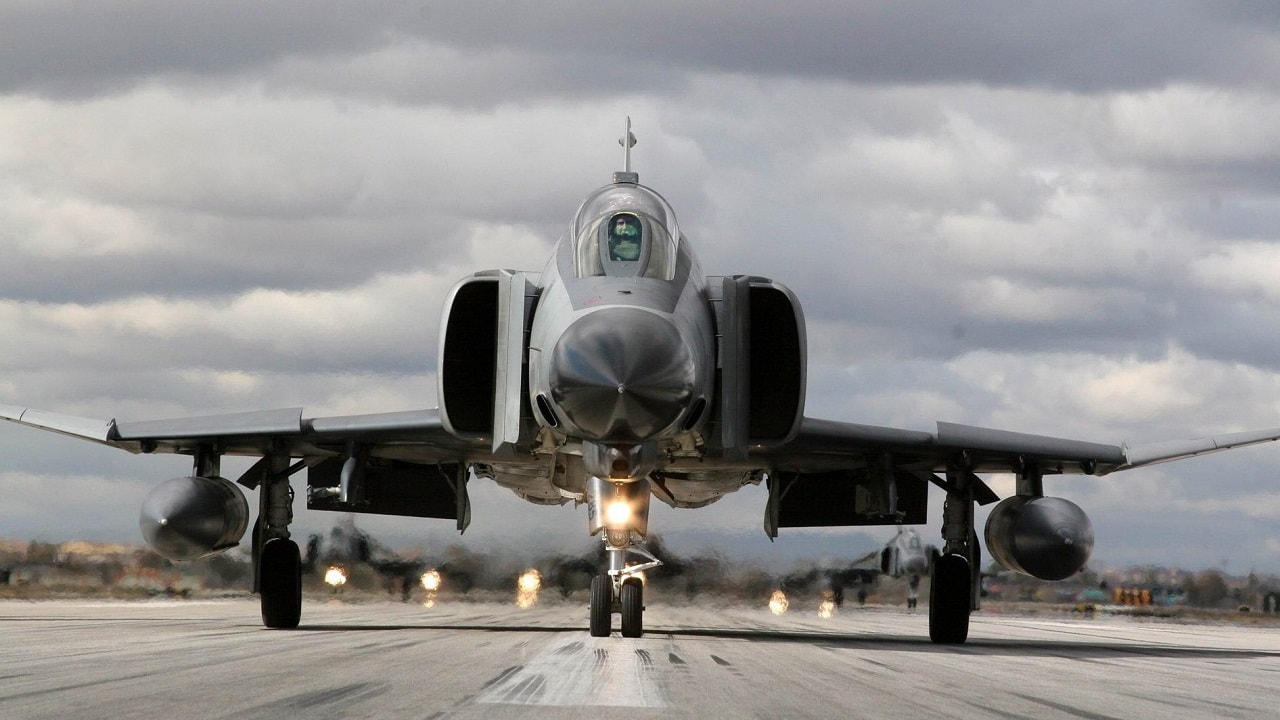Perhaps one of the most revered airframes in U.S. military history is the F-4 Phantom.
When McDonnell Douglas first began development on the fighter-bomber in the 1950’s, the resulting Phantom quickly became one of the most formidable platforms in the post-World War II era.
The F-4 is notoriously known for its role in the Vietnam War, however, the fighter-bomber remained in service with the U.S. military for decades later.
Phantom pilots were uniquely trained to fly the airframe at extremely low altitudes, contributing to the fighter’s powerful reputation.
One former F-4 pilot recalled a moment where he narrowly avoided striking a pickup truck on the road. David Storm recalled the tale in an interview with the Aviation Geek Club, narrating the events that would lead up to the near collision.
The Story
“In the late ’70’s I was in Stan/Eval (Flight Evaluation) in the F-4 wing at Nellis. When giving crews their Tactical Flight Eval, they would plan a low-level mission to the range. I would take off early and hide out in the mountains and desert and try to attack them to check their visual lookout. As happens with any fighter, they occasionally were late or had to abort which left poor me with an F-4 full of gas and 3/4 of the state of Nevada to play. It was a good chance to practice ridge crossings, ‘ultra’ low level flying, and such. There were wild horses to chase and an occasional RV to avoid.
One day doing a ‘snake check’ down a jeep trail as low as I could go, I came over a little rise and was eyeball to eyeball with a pickup truck. 6-G pullup and hope he made it home with clean underwear! Second half of the story – I came home one day and my neighbor was outside to meet me. He was the State Brand Inspector for Nevada – yes, they had one. Most of his duties were up on the BLM land / Nellis ranges investigating cattle rustling. He accused me of running him off the road in my F-4, which happened quite often to him.”
Storm concluded that he “knew his official green Chevy pickup very well” and would do his best to avoid him in the future.
A brief overview of the F-4 Phantom
During the Cold War, McDonnell Douglas was tasked with developing a carrier-based interceptor aircraft for the Navy that could counter the Soviet’s own arsenal. By early 1961, the Phantom was officially adopted by the service and immediately became the Navy’s fastest fighter-bomber. The platform’s long-range and high-altitude capabilities also contributed to its success within the service. Within a few years, the U.S. Marine Corps and the U.S. Air Force also adopted the Phantom.
In addition to the U.S. military, the F-4s have serviced the Air Forces of a host of nations, including Australia, Germany, Greece, Iran, Israel, Japan, the UK and South Korea. The well-armed airframe could carry more than 18,000 pounds of weapons on nine external hardpoints, making it a wildly popular platform to procure. Over the Phantom’s career in service, multiple enhancements were incorporated to the platform, including improved munitions like the AIM-7E-2 that corrected some of the airframe’s flaws.
While the Phantom has been relegated to retirement across the U.S. military, the fighter-bomber continues to serve in several nations and maintains an honorable service history.
Maya Carlin, a Senior Editor for 19FortyFive, is an analyst with the Center for Security Policy and a former Anna Sobol Levy Fellow at IDC Herzliya in Israel. She has by-lines in many publications, including The National Interest, Jerusalem Post, and Times of Israel. You can follow her on Twitter: @MayaCarlin.
From 19FortyFive
The 5 Best .22 LR Semiautomatic Pistols On Earth
Ukraine Footage Shows U.S. M982 ‘Excalibur’ Cut Through Russian Artillery
How To Sink A $3 Billion Dollar Submarine: Leave A Hatch Open

